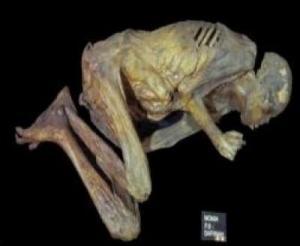Cymbals don't clash of their own accord - in our world, anyway. But the quantum world is bizarrely different. Two metal plates, placed almost infinitesimally close together, spontaneously attract each other.
What seems like magic is known as the Casimir force, and it has been well-documented in experiments. The cause goes to the heart of quantum physics: Seemingly empty space is not actually empty but contains virtual particles associated with fluctuating electromagnetic fields. These particles push the plates from both the inside and the outside. However, only virtual particles of shorter wavelengths - in the quantum world, particles exist simultaneously as waves - can fit into the space between the plates, so that the outward pressure is slightly smaller than the inward pressure. The result is the plates are forced together.

|
| ©Yiliang Bao and Jie Zoue/University of Florida
|
| A scanning electron micrograph, taken with an electron microscope, shows the comb-like structure of a metal plate at the center of newly published University of Florida research on quantum physics.
|
Now, University of Florida physicists have found they can reduce the Casimir force by altering the surface of the plates. The discovery could prove useful as tiny "microelectromechanical" systems - so-called MEMS devices that are already used in a wide array of consumer products - become so small they are affected by quantum forces.








